
Here it is including FNaF2:

Allow me to explain.
Motivation
Long ago, MatPat set the precedent that a timeline is the ultimate way to bring all of one's theories together into a unified description of the story. I have always felt that this was somewhat inadequate. There are many aspects of the story which are not captured very well by a timeline.
These spirit graphs are my proposal for an alternative method of representing the story as a whole; Not to replace a timeline, but to complement it.
Outside of theorycrafting, these may be very useful for describing an AU.
Molecular Spirit Graphs
Some readers may recognize this as an evolution of the diagrams I made for my Elizabeth post. These kinds of graphs are useful for summing up the trajectory of the spirits throughout the story.
Each node represents a "body". Connections between nodes represent the flow of spirits from body to body. For example, the Missing Children Incident looks like this:
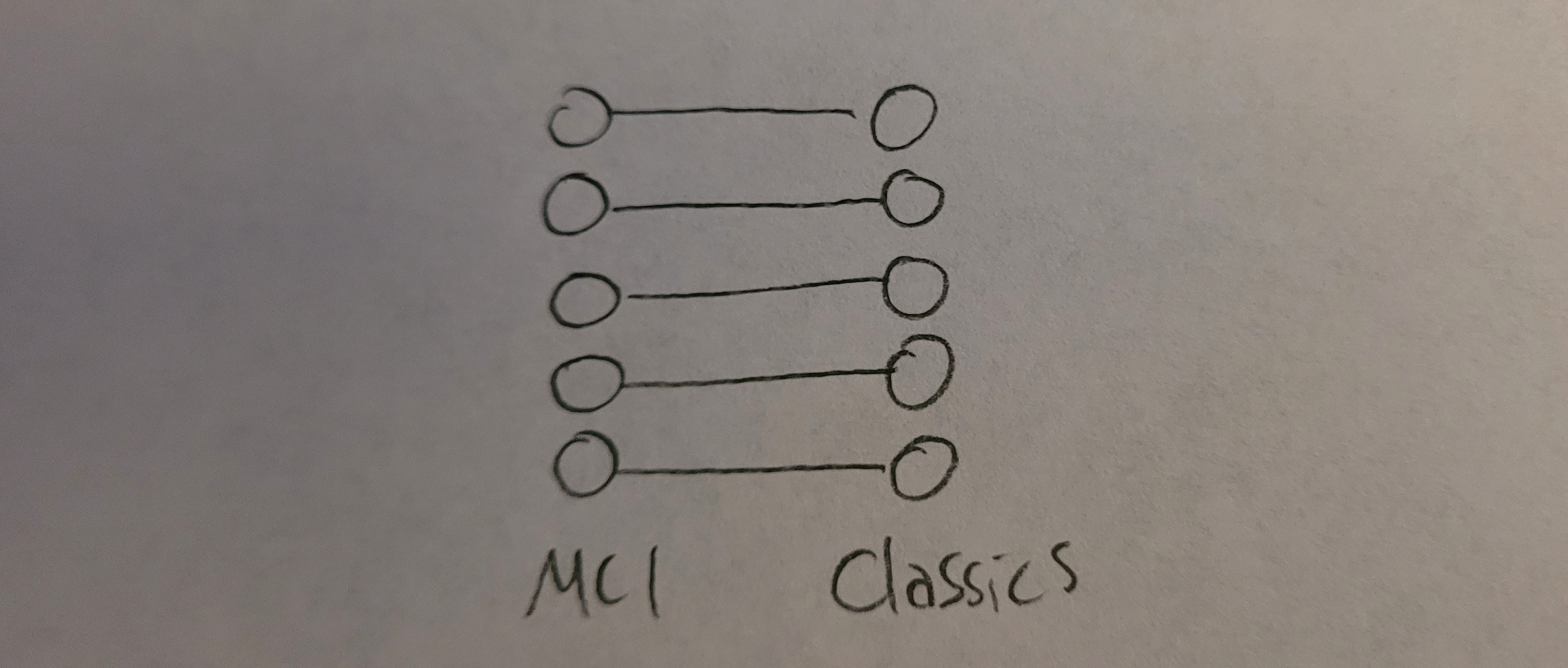
Time runs left to right, but this is only relevant to connections. If 2 nodes are connected, this implies that the spirit flows from the body on the left to the body on the right. For unconnected nodes, time is irrelevant. For example:
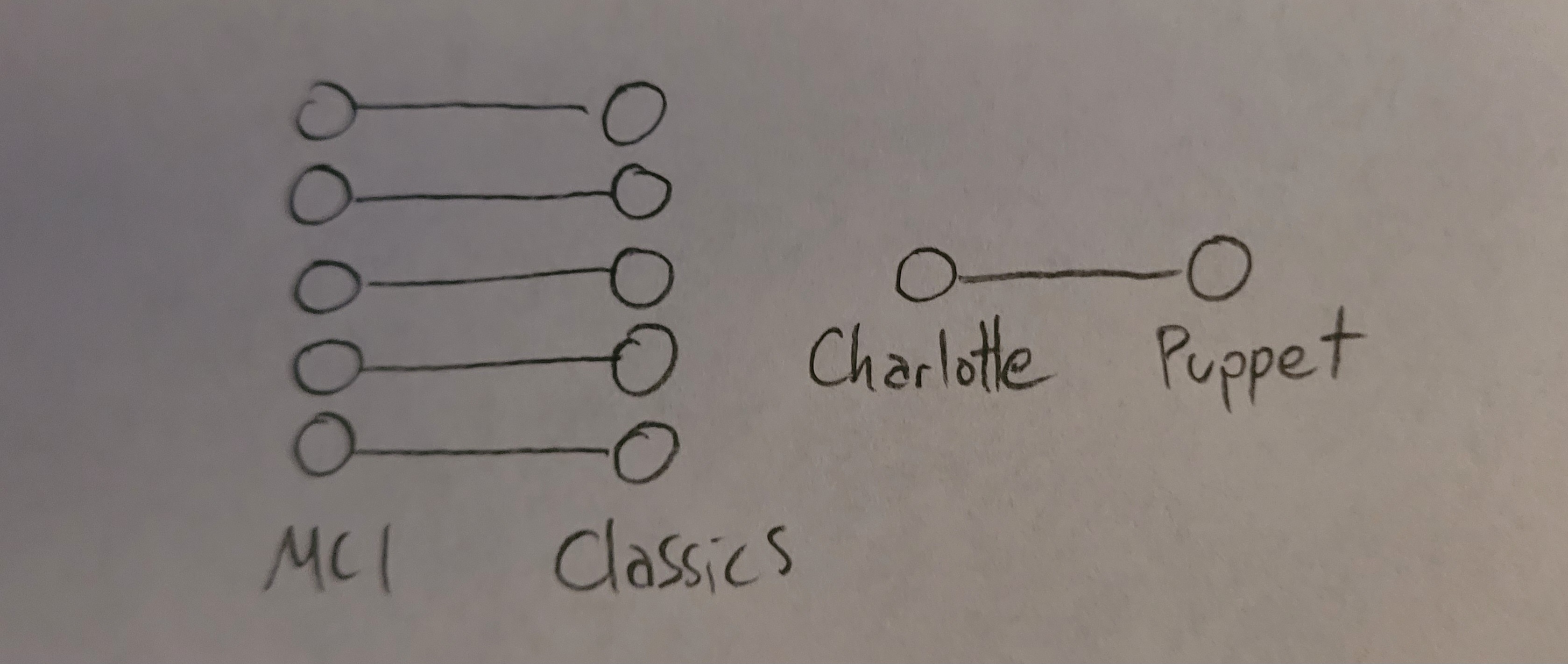
This graph does not imply that Charlotte died after the MCI.
Soul shattering can be represented exactly as you'd expect.
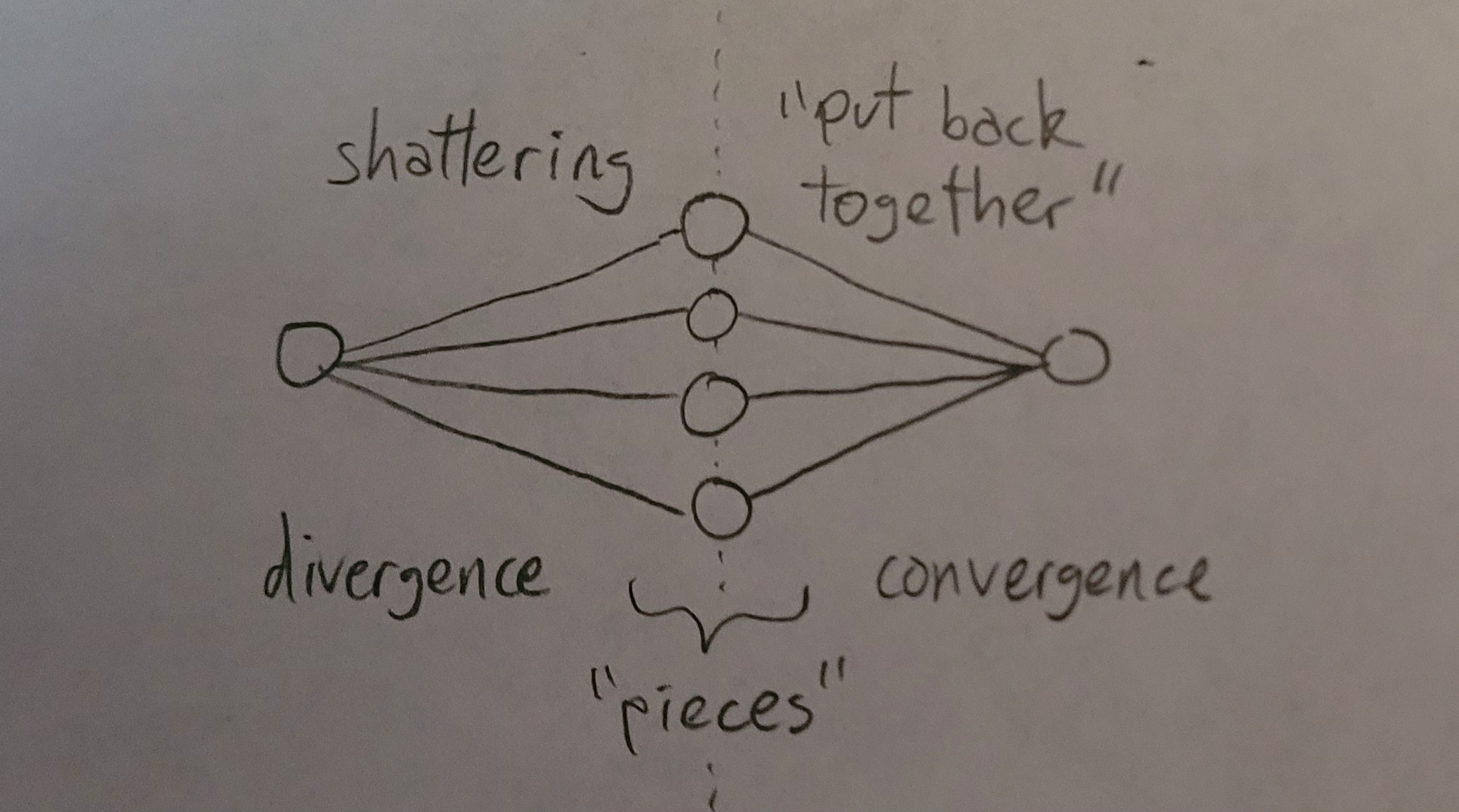
It is worth noting that this representation can be "lossy", depending on how it's used. For example:
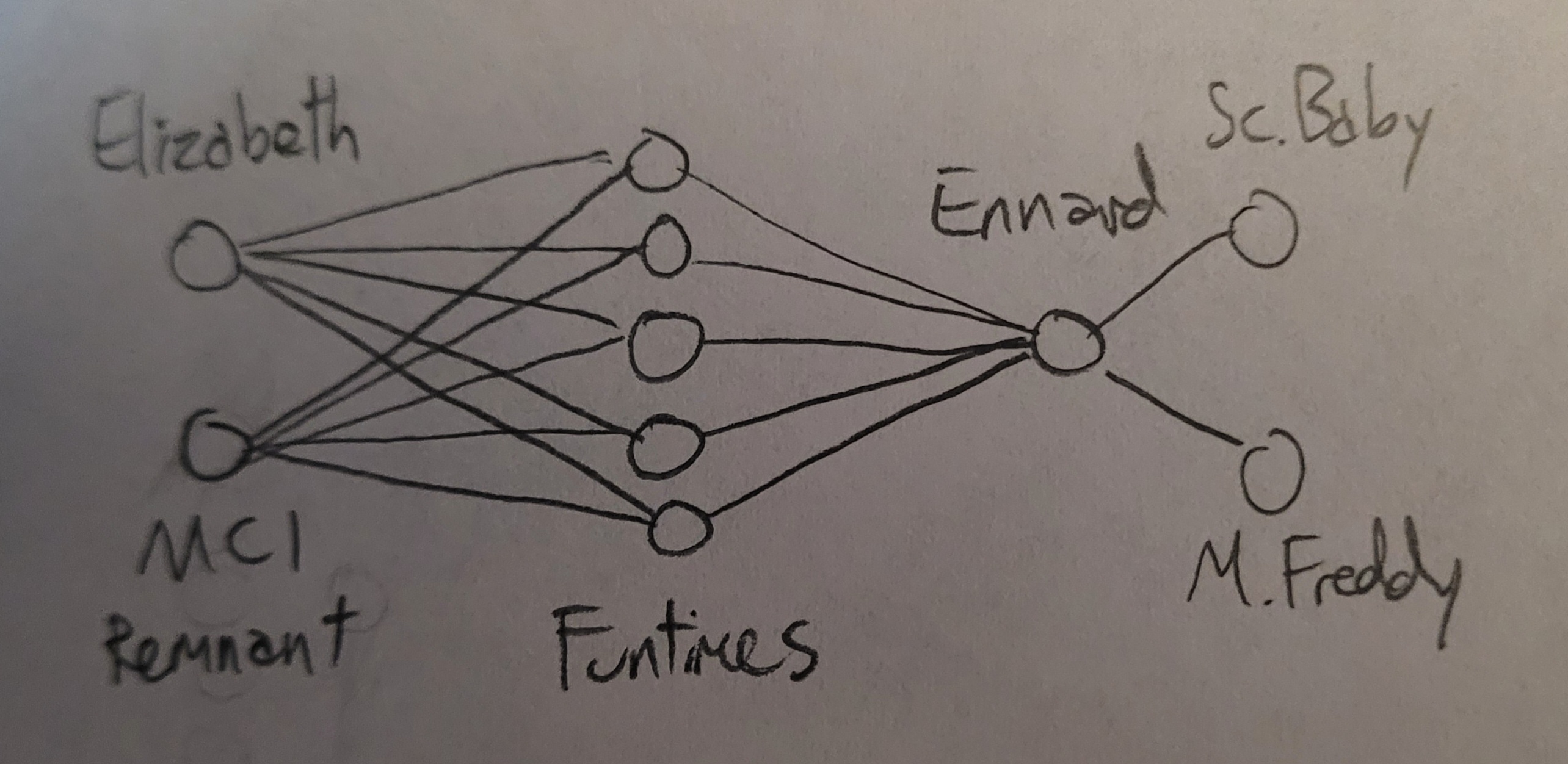
We know that Scrap Baby contains only Elizabeth, and Molten Freddy contains only the MCI. However, that information is not captured by the diagram.
Now that I've explained it, I'll return to the first graph, but with labels this time.
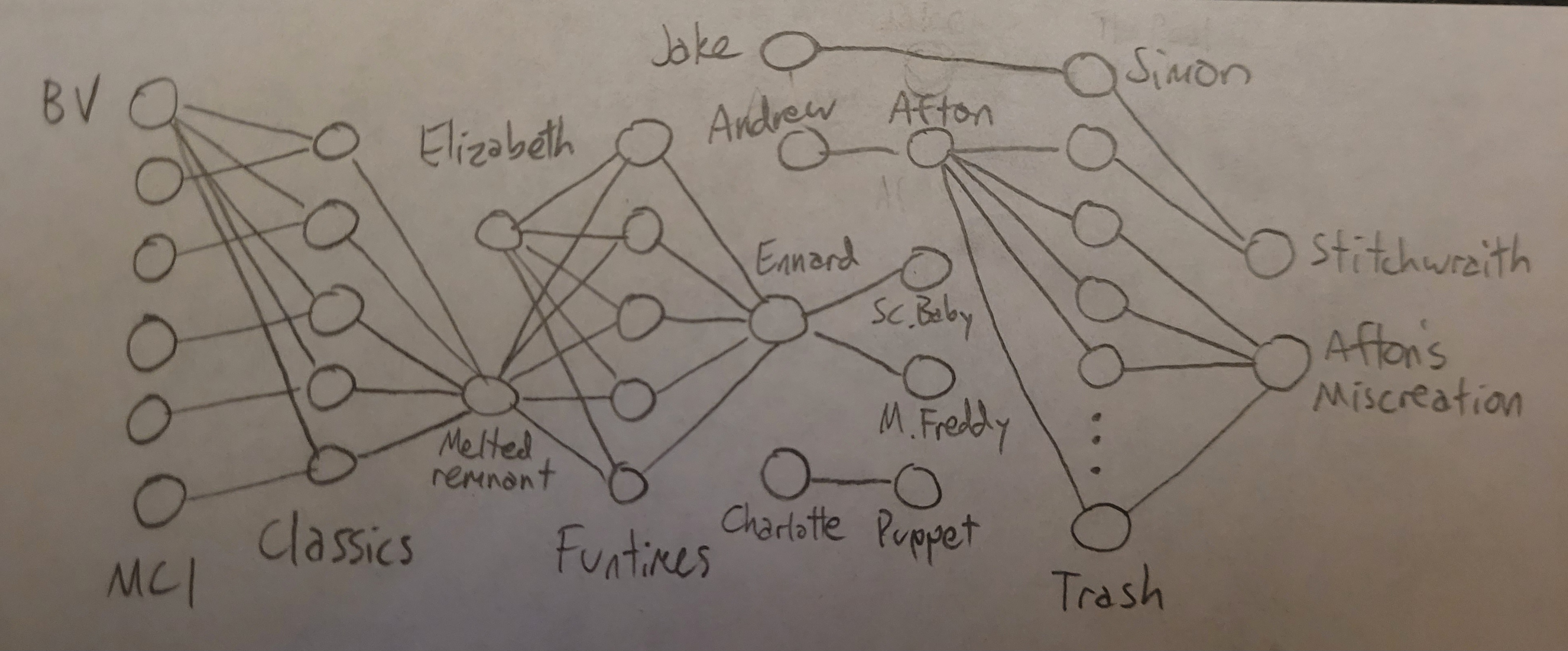
(I'll leave it up to you whether the 5th Funtime is Bon Bon or Yenndo.)
When looking at the story this way, it is apparent that the timeline consists of phases of compression and decompression (labeled c and d below).

This is indicative of FNaF's overarching theme of "take apart and put back together".
Molar Spirit Graphs
In FNaF2, the Classics are torn apart, and their parts are used for the Toys. We don't know exactly whose parts are used for who, so it's a little ambiguous how to draw the graph. If we assume that each Classic contributed at least a small amount to each Toy, then we have...

This is already essentially unreadable, and we haven't even considered the SAVETHEM kids yet. Luckily, since FNaF characters tend to come in groups, there is a more convenient way to represent this.

Instead of connecting each individual character, I have summarized the relationship between the Classics and Toys by connecting the groups as a whole.
This leaves some ambiguity in exactly which Classics are connected to which Toys. In this case, we want that ambiguity, as it accurately represents our knowledge of the situation (the information isn't important, anyway). But in other cases, we may want to be more specific. For this reason, I have come up with 3 types of group connections, to represent 3 ways the elements of the groups might be connected.
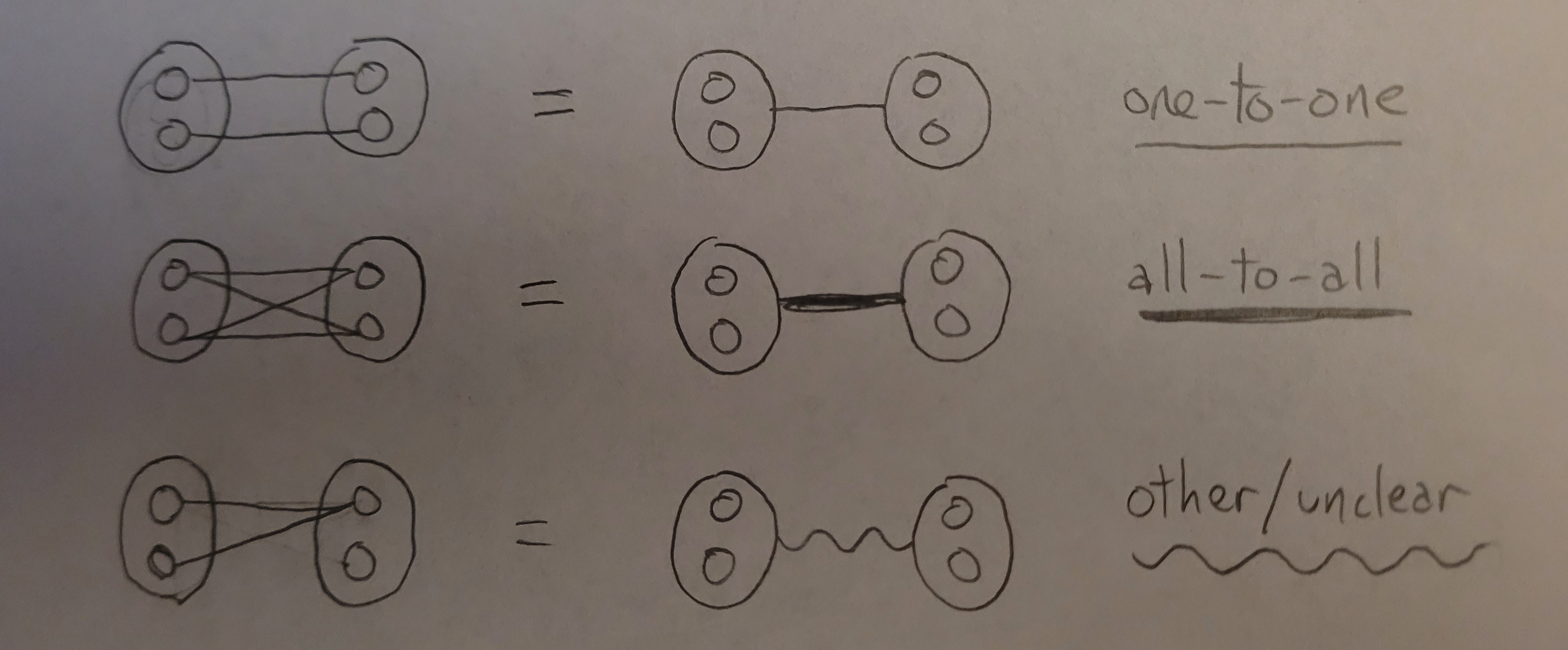
As pictured:
- Regular lines indicate one-to-one connections, where each element in one group connects to a single element in the other.
- Bold lines indicated that groups are fully connected, where each element in one connects to each element in the other.
- Wavy lines are a catch-all for any other kind of connection.
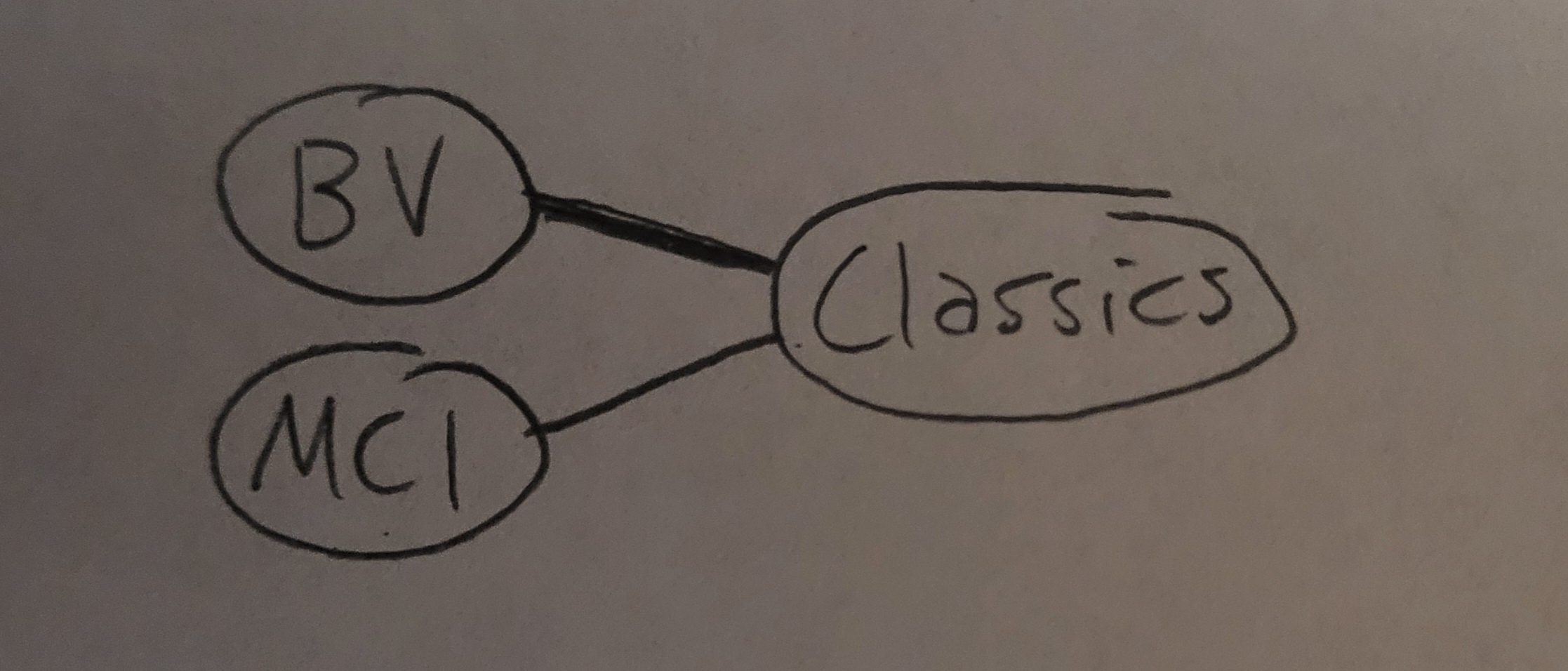
Notice that the line coming from BV is bold, implying BV is connected to all of the Classics. The line coming from the MCI is normal, implying a one-to-one connection.
Again, I will return to a graph from the beginning, now with labels.

(In the unlabeled version, I distinguished individuals from groups by the size of the node.)
Final Notes
I already mentioned how this structure clearly shows off the way FNaF's story goes through phases of compression and decompression. It would be interesting to see if any more broad insights could be extracted from this representation. This approach could probably be straightforwardly applied to the Mimic to get one of those branch diagrams I've seen floating around.
Who knows, maybe the next era of FNaF will be filled with crazy, complicated tragectories of spirits, and this kind of tool will be critical to understanding it.